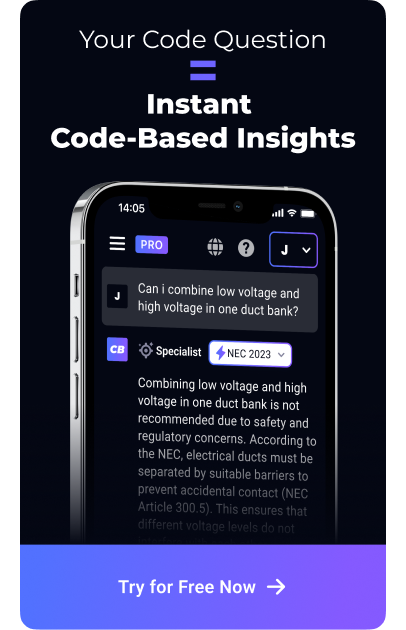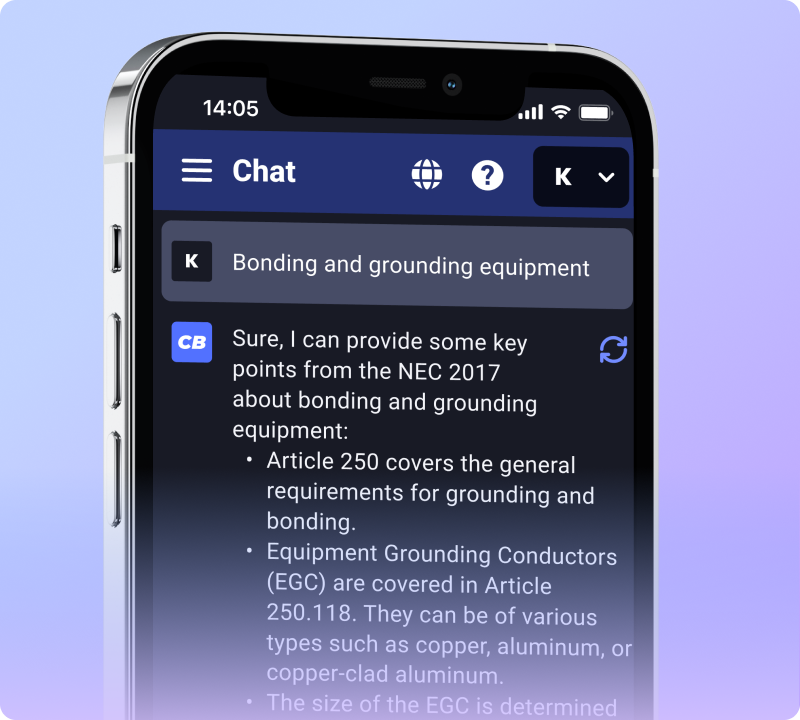Keeping up with updates in the Minnesota Electrical Code can be overwhelming. The code was last updated in 2020, bringing several important changes. This article will guide you through understanding these key updates and regulations, helping ensure your projects comply.
Stay informed and safe!
Key Takeaways
- The Minnesota Electrical Code was last updated in 2020 and aligns with the National Electrical Code (NEC) for ensuring safe electrical installations. Compliance with the latest updates is necessary for all electrical work starting July 1, 2023.
- Key changes in the 2023 NEC include mandatory GFCI protection for all kitchen receptacles and recognition of 10-ampere branch circuits. These updates improve safety standards across residential and commercial settings.
- Electricians must secure proper permits before any electrical work begins to comply with Minnesota regulations. Common violations like failing to install GFCI protection can lead to serious safety issues.
- Staying informed about code changes is crucial for electricians. The NEC can be accessed online through resources provided by the National Fire Protection Association (NFPA) and the Minnesota Department of Labor and Industry.
- Understanding homeowner limitations on performing their own electrical work helps ensure that installation practices meet current safety requirements and code standards, protecting both homeowners and professionals from potential hazards.
Overview of Electrical Codes and Standards
Electrical codes and standards ensure safety in every electrical installation. Following these regulations protects both homeowners and workers from potential hazards.
Importance of following regulations for safety
Following regulations for safety is essential in electrical work. The Minnesota Electrical Code ensures safe installations. Compliance with the latest guidelines protects both workers and homeowners.
For instance, GFCI protection for all kitchen receptacles, including countertops, is mandatory. This requirement minimizes shock hazards.
The NEC sets minimum safety standards for electrical installations across the United States. Adhering to these regulations guards against electrical fires and malfunctions. Electrical permits filed on or after July 1, 2023, must comply with the 2023 NEC.
This code also recognizes 10-ampere branch circuits for specific lighting and power loads. Understanding the Minnesota Electrical Code is crucial. It helps electricians and homeowners avoid common violations and ensures safety in every installation.
Purpose of the Minnesota Electrical Code
The Minnesota Electrical Code serves a vital purpose in ensuring safe electrical practices throughout the state. This code outlines the minimum safety requirements for electrical installations.
It aims to protect people and property from electrical hazards. The code is updated periodically to reflect current safety standards. The latest version, adopted in November 2020, aligns with the National Electrical Code (NEC).
Compliance with the 2023 NEC is required for permits filed on or after July 1, 2023. Electricians must be aware of these updates to maintain safety in their work.
Understanding the Minnesota Electrical Code helps electricians avoid potential violations. For example, GFCI protection is mandatory for all kitchen receptacles, including wall space and countertops.
Adhering to outlet height regulations is also crucial. Electricians should familiarize themselves with the electrical inspection checklist for one-family homes. Knowledge of homeowner electrical work regulations is essential too.
Following the Minnesota Electrical Code ensures compliance and promotes safe electrical installations across the state.
Key Updates and Changes in the 2023 National Electrical Code
The 2023 National Electrical Code introduces several important updates. These changes affect agriculture buildings, general wiring practices, and safety measures for hazardous locations.
What is the 2023 NEC?
The 2023 National Electrical Code (NEC) establishes crucial safety standards for electrical installations across the U.S. This code defines minimum requirements to ensure safety in residential and commercial settings.
Minnesota adopted the 2023 NEC for electrical permits filed on or after July 1, 2023. Electricians must understand these updates to maintain compliance with Minnesota regulations.
Key changes in the 2023 NEC include GFCI protection for all kitchen receptacles, including wall space and countertops. The code recognizes 10-ampere branch circuits for select power and lighting loads.
Electricians should stay informed about these NEC changes to avoid wiring code violations. Following the Minnesota Electrical Code helps ensure safety for both electricians and homeowners.
Adoption info for Minnesota
Minnesota adopted the 2023 National Electrical Code (NEC) starting July 1, 2023. All electrical permits filed on or after this date must follow these new NEC regulations. This includes safety measures such as GFCI installation for kitchen receptacles.
Before this, Minnesota officially adopted the 2020 NEC on November 17, 2020. Electricians should be aware that licensing exams will also transition to the 2023 NEC by July 17, 2023.
Staying updated ensures compliance with electrical code updates and safety standards in Minnesota.
Changes in regulations for agriculture buildings, general wiring, and hazardous locations
The 2023 National Electrical Code (NEC) includes significant updates for agriculture buildings and hazardous locations. These changes improve safety and efficiency in wiring practices.
Now, farmers must meet stricter requirements for electrical installations in agricultural settings. This ensures protection against hazards unique to these environments. The NEC also outlines new standards for general wiring.
Electricians must familiarize themselves with these updated regulations to ensure compliance.
Hazardous locations face stricter regulations as well. The NEC specifies enhanced safety measures to minimize risks in these areas. Electricians must stay informed about these standards to avoid violations.
Compliance with the Minnesota Electrical Code is crucial in all settings. Understanding these updates safeguards against potential dangers and ensures reliable electrical installations.
The next section will cover the 2020 Minnesota Electrical Code.
Understanding the 2020 Minnesota Electrical Code
The 2020 Minnesota Electrical Code introduces important updates that improve safety and compliance. This code outlines specific requirements for residential properties, ensuring electricians meet high standards throughout their work.
Changes compared to previous versions
The 2020 Minnesota Electrical Code features significant updates from earlier versions. It aligns closely with the 2020 National Electrical Code (NEC), adopted in Minnesota on November 17, 2020.
This version emphasizes safety and introduces GFCI protection for all kitchen receptacles, including those on countertops and wall spaces.
Additionally, the code now recognizes 10-ampere branch circuits for specific power and lighting loads. These changes reflect a growing focus on enhancing safety standards in electrical installations.
As of July 1, 2023, all electrical permits must comply with the latest NEC. Understanding these updates ensures that electricians maintain electrical code compliance and adhere to permit requirements.
Electrical inspection checklist for one-family homes
For one-family homes, an electrical inspection checklist is essential. Homeowners should focus on key areas to ensure safety. Check all outlets and switches for compliance with the Minnesota Electrical Code.
Inspect kitchen island receptacles and ensure they meet GFCI protection requirements. Verify that electrical permits for work filed on or after July 1, 2023, follow the 2023 National Electrical Code (NEC).
Electrical inspectors should examine wiring conditions, including branch circuits. Keep an eye on the newly recognized 10-ampere circuits for specific loads. Homeowners may face limitations on performing their own electrical work, so awareness of regulations is critical.
This checklist helps maintain compliance with safety standards and regulations for safe electrical installations. Next, access online resources for reviewing the NEC.
How to Access the NEC
You can find the National Electrical Code online. These resources help you stay current with updates and changes in electrical regulations.
Online resources for accessing the NEC
The National Electrical Code (NEC) is crucial for electricians. Online resources make it easy to access the latest requirements. Visit the National Fire Protection Association (NFPA) website for the full text of the NEC.
You can also check state-specific guidelines on the Minnesota Department of Labor and Industry’s site. This ensures compliance with the Minnesota Electrical Code.
Starting July 1, 2023, all electrical permits must follow the 2023 NEC. The latest updates include GFCI protection for kitchen receptacles and changes for agriculture buildings. Knowing these details helps you avoid violations.
Next, let’s explore how to ensure compliance with the Minnesota Electrical Code.
Importance of staying up-to-date with code changes
Staying current with code changes is essential for electricians. Minnesota adopted the 2023 National Electrical Code (NEC) on July 1, 2023. Electrical permits filed after this date must comply with the new regulations.
This code emphasizes safety and outlines minimum requirements for electrical installations.
GFCI protection is now necessary for all kitchen receptacles, including those on countertops. Understanding these changes helps professionals avoid violations and maintain compliance with the Minnesota Electrical Code.
Electrical licensing exams will also transition to the 2023 NEC starting July 17, 2023. Being informed ensures safe practices and adherence to electrical permit requirements, safeguarding both workers and homeowners.
Ensuring Compliance with the Minnesota Electrical Code
To comply with the Minnesota Electrical Code, electricians must secure proper permits before starting any electrical work. They should also familiarize themselves with common violations to avoid penalties and ensure safety in their projects.
Permit requirements for electrical work
Electrical work in Minnesota requires permits for safety and compliance. Any electrical permits filed on or after July 1, 2023, must align with the 2023 National Electrical Code (NEC).
Electricians must secure a permit before starting work. This process ensures adherence to the Minnesota Electrical Code and protects homeowners.
GFCI protection for kitchen receptacles is mandatory under the NEC. Electricians should familiarize themselves with the permit application process. Understanding the rules helps avoid common violations.
Awareness of limitations for homeowners doing their own electrical work is crucial. Compliance with the electrical wiring code ensures safe installations.
Common violations and how to avoid them
Common violations often occur when electricians overlook crucial regulations in the Minnesota Electrical Code. Failing to obtain the correct electrical permits can lead to significant issues.
Since July 1, 2023, all permits for electrical work must comply with the 2023 National Electrical Code (NEC). GFCI protection is another common point of violation. The NEC mandates GFCI protection for all kitchen receptacles, including wall and countertop outlets.
To avoid these pitfalls, electricians should familiarize themselves with the 2020 Minnesota Electrical Code and the updated NEC. Regularly reviewing the electrical inspection checklist for one-family homes can help.
Understanding the requirements for kitchen island receptacle regulations and other specific guidelines will ensure compliance. This knowledge proves vital in maintaining safety standards for electrical installations.
Next, explore how to access the NEC for up-to-date information.
Importance of GFCI installation for safety
GFCI installation plays a critical role in electrical safety. The National Electrical Code requires GFCI protection for all kitchen receptacles, including wall space receptacles and kitchen countertops.
This requirement helps prevent electric shocks and reduces the risk of electrical fires. Electricians must ensure that they follow this important regulation to protect homeowners and their properties.
The Minnesota Electrical Code, updated with the 2023 NEC, emphasizes safety standards. Compliance with these codes is crucial for all electrical work. Licensed electricians must stay informed about GFCI requirements to avoid violations.
Proper installation of GFCIs can save lives and enhance safety in residential spaces.
Conclusion
Understanding the Minnesota Electrical Code is essential for safety. Staying updated with the 2023 NEC will help you meet the latest requirements. Compliance protects both workers and homeowners.
Keep informed about permit rules and common violations. Follow the code to ensure safe electrical installations.
FAQs
1. What is the Minnesota Electrical Code?
The Minnesota Electrical Code is a set of standards that regulate electrical wiring to ensure safety.
2. Can you explain the National Electrical Code adoption in Minnesota?
National Electrical Code adoption means that Minnesota has adopted these national guidelines for residential electrical code standards, ensuring uniformity and safety across the state.
3. How does understanding key updates and regulations of the Minnesota Electrical Code help me avoid violations?
By understanding key updates and regulations, you can ensure your property’s electrical systems comply with current codes, avoiding potential violations.
4. Are residential properties subject to different rules under the National Electrical code?
Yes, there are specific residential electrical code standards outlined in the National Electrical Code which must be adhered to when installing or updating home electric systems.

